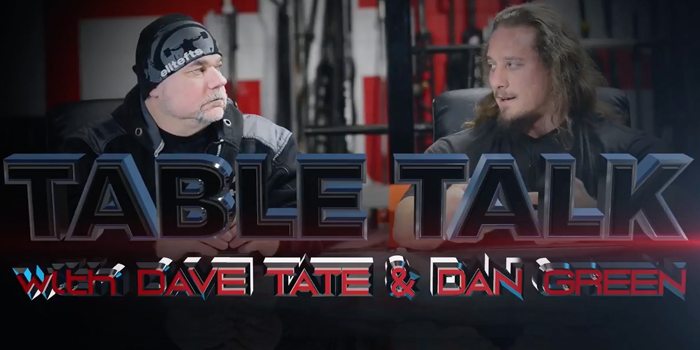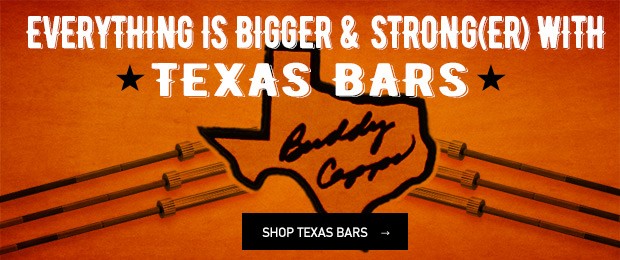
Hitting a PR total is priority number one for powerlifters: bigger squat, bigger bench, bigger deadlift, and bigger total on meet day. But this can only happen if you're able to take the platform and perform the movements correctly. If your body falls apart, not only will you not hit a PR total — you won't have a total at all.
The topic for today's Table Talk is longevity and building a long-term plan. In this video, Dave and Dan discuss how a lifter can increase their number of years competing in this sport, and what that means for writing a training and recovery program.
WATCH: Table Talk with Dan Green — Adrenaline Levels in Training
To address these concepts, Dan first shares his perspective on injuries and knowing when it's time to take a step back. He points out that you can only get stronger while you're in the gym, which means that taking the extra time to progress slowly is better than moving too quickly, getting injured, and then spending weeks outside of the gym regressing. Focusing on your quality of movement and treating your body like it is a high-quality workhorse is critical. Longevity in powerlifting does not come easy, but you can certainly increase your time in this sport by taking care of your technique, receiving chiropractic and other forms of therapy, and doing your own recovery work, such as stretching.
From Dave's perspective, part of longevity is knowing your genetics. If you have a predisposition to arthritis, be aware of it, because that means that every movement will contribute to that arthritis. Those reps of mobility and warm-up work you think are helping? If the problem is arthritis, that work might actually be hurting you.
In regard to forms of therapy, Dave's advice is to try a lot of different things to find what you like best. Once you find the form of therapy that works best for you, keep it in your back pocket and use it once you're close to a meet. You want to receive the greatest benefit from the therapy at precisely the time you need it, and introducing it at the point in the training cycle that you're getting close to a meet will make this happen. After the meet, Dave's advice is to spend some time doing zero barbell training. No barbell in your hands and no barbell on your back. This could last for four or even eight weeks, depending on your level of skill and how long you prepared for the meet.
Dan's final point on the discussion is to build a long-term plan. If you plan to do two or three meets over the course of the year, you can design an outline of the year's training plan that accounts for the stressors of each competition and gets your body back to a healthy training state. For instance, maybe you cut weight for some and show up at your training weight to compete for others. Maybe you train six weeks for one competition and 16 weeks for another. But if you haphazardly throw in five or six meets in one year, and cut weight for each of them, it will be very taxing on your body and create a difficult scenario for your long-term progress.










